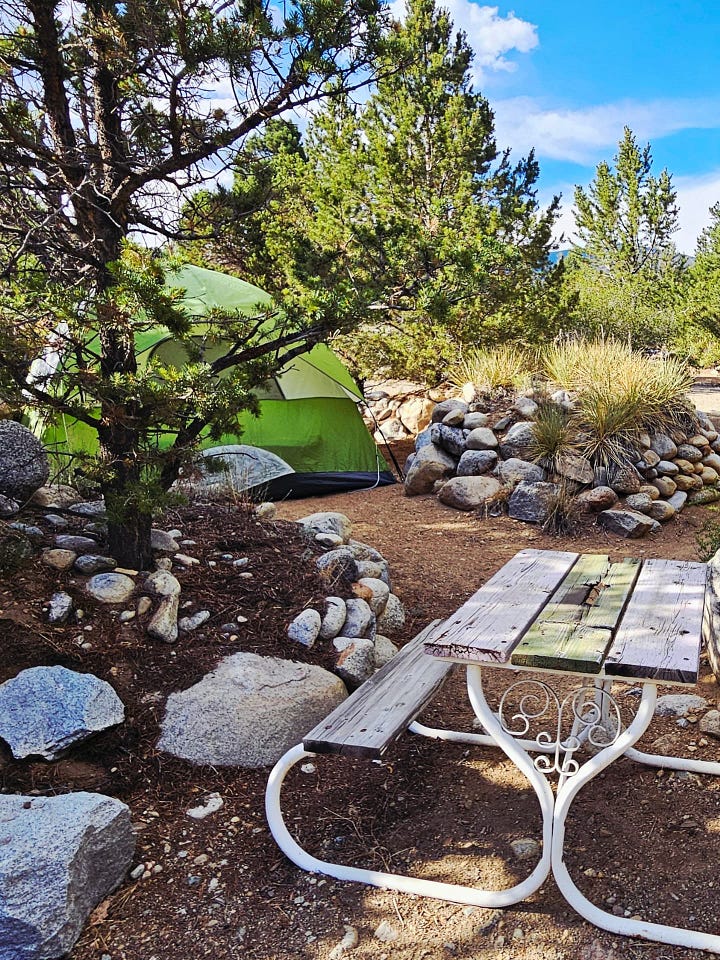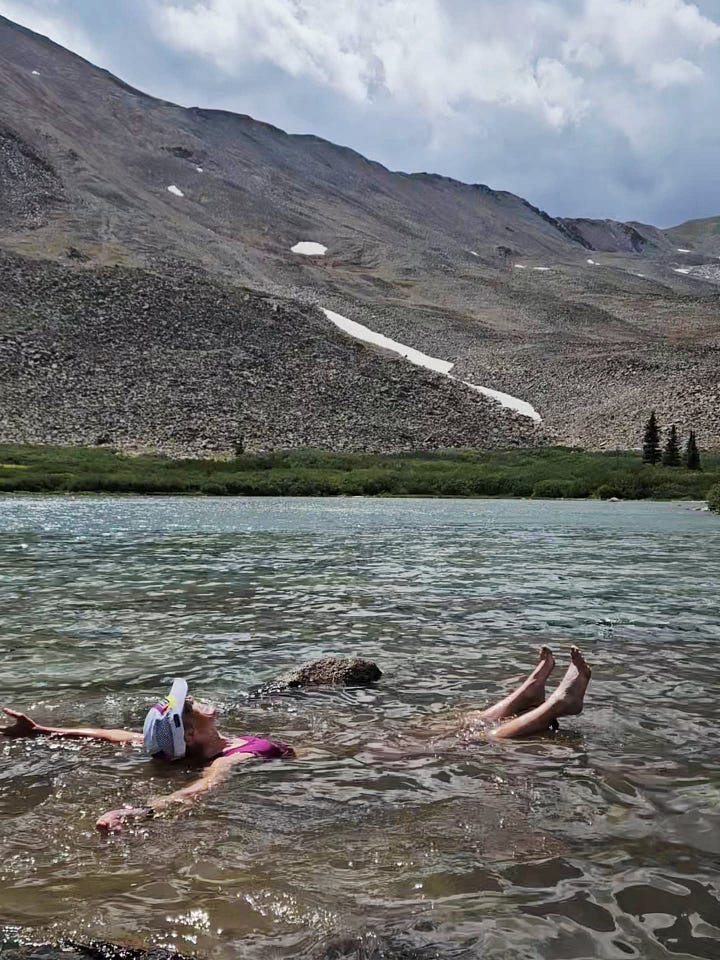Running on Unexpected Time: Aimee Jacobs
From a rare cancer diagnosis to winning Bandera 100K, the Texas-based Army PT heads into her first Leadville Trail 100 running with purpose.
We first noticed Aimee in January at Bandera 100K, where she won the women’s race and finished third overall. She’s based in San Antonio, a relative newcomer to ultras, and is taking big swings at big races. Last August she was diagnosed with a rare pelvic bone cancer, and three months later she won her first 100-miler outright. Her approach and energy inspire those around her — as her friend and frequent training partner Courtney Rouse put it, “Aimee is a combination of very friendly and very intense” and “she's had a rough year or so, but you'd never know it upon meeting her because she's so upbeat.”
This summer has been about building toward Leadville Trail 100, learning from Silver Rush 50, and acclimating for elevation on a road trip from Texas to Colorado in the weeks leading up to this weekend’s race. Beyond Leadville she’s targeting Javelina Jundred and Black Canyon 100k, with eyes toward Western States.
Editor’s Note: Aimee is using every race she “gets to do” as a platform to raise awareness and funding for CHRISTUS Children’s pediatric cancer care. It’s a cause close to her heart: she’s received world-class care through her Army status and medical connections, and wants to ensure young cancer patients without the same resources still have access to lifesaving treatment. You can learn more and support her fundraiser here.
The Ultra Minute: Who is Aimee Jacobs in a sentence or two?
Aimee Jacobs: I’m an Army physical therapist who runs ultramarathons for fun, believes carbs are a food group, and thinks a 100-mile race counts as a vacation.
TUM: Last August you were diagnosed with pelvic chondrosarcoma (a rare pelvic bone cancer). In the days after hearing that news, what did life look like, and what were the first steps you took?
Aimee: Honestly, my world was rocked that first week, but I didn’t want to stop either my post-doc fellowship or training for my first 100-miler. After unsuccessfully trying to “research my way” to the best option (there isn’t much out there), I decided to trust my amazing ortho oncologist and work with him to build a plan.
TUM: Three months later you started your first 100 miler at the Dinosaur Valley Endurance Run and won overall with a course record. How did you make that happen, in terms of mindset and one or two choices that mattered most?
Aimee: I was curious how far I could push my mind and body, so I went all-in on the process. It was 100% a team effort with my coach, my training partners, and the crew & pacers who kept me honest to my goal on race day.
TUM: What first drew you to ultrarunning, and when did you know it was your sport?
Aimee: I started trail running in Hawaii while training for a Spartan Trifecta, and slowly realized I liked the running part more than the obstacles. After my first 50k in Nov23, which was incredibly hard but weirdly addictive, I knew I’d found my thing.
TUM: Earlier this year you won Bandera 100K and placed third overall. What did that result do for your confidence, and how did it shape your plan for the rest of the season?
Aimee: That was unexpected but definitely motivating that Dino Valley wasn't just a "fluke", but my season plan was already set. Once I got the gift of “unexpected time” in December in the form of a year for sure without surgery, I signed up for several bucket list races.
TUM: Now you have Leadville coming up, and you ran Silver Rush 50 last month to prep. That day didn’t go to plan at altitude. What did you change after Silver Rush for the final month into Leadville, and was the decision to road trip up early part of that plan?
Aimee: I was 100% humbled by the altitude and ended up getting HAPE during the race — turns out I am not a natural mountain altitude athlete. Ryan added more overdressed heat runs to my plan for some “poor man’s altitude training,” and I decided to take extra leave for a slow, gradual ascent to Leadville to give myself a better shot at acclimating.
TUM: You drove up a couple of weeks early, camping and running along the way. Why that approach, and what was your favorite camp spot or run from the trip?
Aimee: Definitely strategic for acclimation… but let’s be honest, also hella fun. Great Sand Dunes National Park ended up being the unexpected gem of the trip — incredible camping, even better running.




TUM: We spoke with your coach, Ryan Miller, who said you’ve been intentional about mental skills work. What is one tool you’ll lean on on race day?
Aimee: I love the concept of embracing your “golden shadow” — I'll be running with joy and curiosity, while pushing myself to my absolute limits. I’ll also lean on two personal mantras: I’m not trying to be THE best, I’m going for MY best. Running for Purpose — this is more than just me.
TUM: Ryan also noted you often stack 100 to 110 miles per week on about 5 to 6 hours of sleep while balancing Army PT work and school, and he compared that sleep need to Kilian Jornet. How does that land with you, and how do you keep that schedule sustainable?
Aimee: Oh gosh — I can never be compared to him! I just have so many things I love and so many big goals. It’s all stuff I get to do, which makes it sustainable even when the schedule’s crazy.
TUM: If you’re comfortable sharing, what does the medical path ahead look like, and how do you handle the uncertainty associated with it?
Aimee: My ortho oncologist and I basically made a handshake agreement that once my tumor shows growth on surveillance scans, I’ll move forward with the hemipelvectomy and reconstruction. The tumor is malignant and could metastasize to my lungs or elsewhere if untreated. But right now it’s stable, and we don’t know if I’d be able to run trails or do the things I love after surgery, so I’d rather use this time fully than waste it worrying about what I can’t control.
TUM: After Leadville you have Javelina Jundred and Black Canyon 100K. Are those Western States Golden Ticket targets, and looking beyond this season, what are your bigger ambitions in the sport?
Aimee: Yes — might as well dream big, right? It’s a long shot with how competitive this sport is, but Western States is 100% a bucket list race. Western States, obviously. I’d also love to go back and race HURT100 since those are the trails I first started trail running on when stationed in Hawaii before doing my first ultra. Beyond that, I plan to keep filling each year that I get with new races in new places, sign up for races that scare me a little, and keep pushing myself to be better.
TUM: Anything we didn’t cover that you want the TUM audience to know?
Aimee: Running gives me a way to turn challenge into purpose. After the diagnosis, it was running for acceptance, strength, and courage. Right now, that means using every race to raise support for CHRISTUS Children’s, helping give young cancer patients hope, care, and a fighting chance — the same things I’ve been given.
Follow Aimee on Instagram at @a_jacobs89 and support her CHRISTUS Children’s fundraiser here. Temp Talks Podcast also had her on back in March, which is a great way to go deeper on her story.





A great read, Ken. Thanks for covering this.